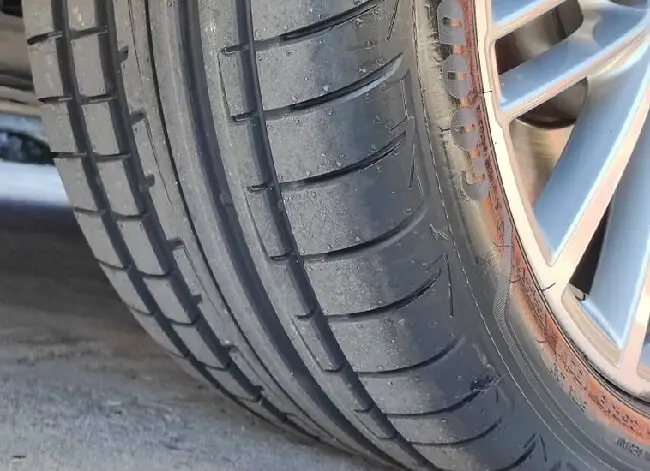Tire Size 235/40r19 vs 245/40r19

Switching from 235/40r19 to 245/40r19 tires is possible, as the overall diameter difference is within the acceptable range of ±3%. However, it’s essential to consider the potential impacts on your vehicle’s performance and handling before making the change.
- The overall diameter difference between 235/40r19 and 245/40r19 tires is 1.2%, which falls within the acceptable range of ±3%
- The width of 245/40r19 tires is 4.3% larger than 235/40r19 tires
- The sidewall height of 245/40r19 tires is 4.3% taller than 235/40r19 tires
- The speedometer reading will be slightly affected, with the actual speed being 0.24 mph faster than the indicated speed at 20 mph
235/40r19 vs 245/40r19 Table
The main difference between 235/40r19 and 245/40r19 tires is the width, with the 245/40r19 tire size being 10 mm (0.39 inches) wider. This difference in width can affect the vehicle’s handling and stability.

Fitment Guide
The overall diameter difference between 235/40r19 and 245/40r19 tires is 1.2%, which is within the acceptable range of ±3%. Therefore, the interchange is recommended without requiring significant adaptations.
On-Road Impact
Switching to wider 245/40r19 tires can have various effects on your vehicle’s on-road performance. Here are some aspects to consider:
- Ride Comfort: The wider tires may slightly reduce ride comfort due to a shorter sidewall and stiffer ride.
- Handling: The increased width of 245/40r19 tires can improve handling and stability, particularly during cornering and high-speed maneuvers.
- Speedometer Accuracy: The speedometer reading will be minimally affected, with the actual speed being 0.24 mph faster than the indicated speed at 20 mph.
- Fuel Efficiency: The wider tires may slightly decrease fuel efficiency due to increased rolling resistance.

Off-Road Impact
If you plan to use your vehicle off-road, switching to 245/40r19 tires can offer some benefits, but also has some drawbacks:
- Ground Clearance: The taller sidewall of 245/40r19 tires can slightly increase ground clearance, which may be beneficial for navigating rough terrain.
- Traction: The wider tires can provide better traction on loose surfaces like sand or gravel.
- Durability: The wider tires may be more susceptible to damage from rocks and other off-road hazards due to the increased exposure of the sidewall.
What is the Difference Between 235/40r19 and 245/40r19?
The main difference between 235/40r19 and 245/40r19 tires is the width. The 245/40r19 tire is 10 mm (0.39 inches) wider than the 235/40r19 tire.
This difference in width can affect various aspects of vehicle performance, such as handling, stability, and ride comfort.
The wider tire may provide better grip and stability during cornering and high-speed maneuvers, but it may also slightly reduce ride comfort due to the shorter sidewall and stiffer ride.

Can I Use 245/40r19 Instead of 235/40r19?
Yes, you can use 245/40r19 tires instead of 235/40r19 tires. The overall diameter difference between these two tire sizes is 1.2%, which falls within the acceptable range of 3%.
This means that switching from 235/40r19 to 245/40r19 tires should not cause any significant issues with vehicle handling, speedometer accuracy, or overall performance.
How Much Taller Is a 245/40r19 Tire Than a 235/40r19?
A 245/40r19 tire is 0.31 inches (8 mm) taller than a 235/40r19 tire. The diameter of the 235/40r19 tire is 26.4 inches (670.6 mm), while the diameter of the 245/40r19 tire is 26.72 inches (678.6 mm).
This difference in height is due to the increased sidewall height of the 245/40r19 tire, which is 0.16 inches (4 mm) taller than the sidewall of the 235/40r19 tire.
How Much Wider is a 245/40r19 Tire Than a 235/40r19?
A 245/40r19 tire is 0.39 inches (10 mm) wider than a 235/40r19 tire. The width of the 235/40r19 tire is 9.25 inches (235 mm), while the width of the 245/40r19 tire is 9.65 inches (245 mm).
This difference in width is the primary distinction between these two tire sizes and can impact various aspects of vehicle performance and handling.
Our Observations
After analyzing the differences between 235/40r19 and 245/40r19 tires, we conclude that switching to the wider tires can offer some benefits, such as improved handling and stability on-road, and better traction off-road.
However, these advantages come with minor drawbacks, such as a slightly stiffer ride and potentially decreased fuel efficiency.
The overall impact of switching from 235/40r19 to 245/40r19 tires is relatively minimal, as the diameter difference is within the acceptable range. The decision to switch ultimately depends on your specific needs and preferences.
If you prioritize on-road performance and handling, the wider tires may be a good choice. However, if you value ride comfort and fuel efficiency, sticking with the original 235/40r19 tires may be the better option.

Meet Caitlin McCormack, a Tire Size Expert and Blogger Passionate About Everything Related to Tires. With Years of Experience in the Tire Industry, Caitlin Has Become an Expert in Tire Sizes and Their Impact on Vehicle Performance.
